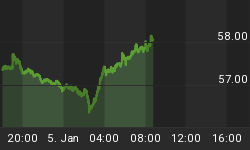Long Term Elliott Wave Count
Bud: I don't know if you follow the thoughts of other Elliot Wave analysts. Most of them think that the Great Depression was a grand super-cycle Wave 2, For the last decade or so, as well as this coming decade, most Elliot Wave analysts think we are in grand super-cycle Wave 4.
Back in the Great Depression, government policy was rather hawkish. Today, the Federal Reserve is easing. Do you think this has anything to do with the severe crash of 80% of the stock market in the 1930s, while this time the worst of the crash was around 60%? What do the Wave 2 and Wave 4 counts have to do with it?
Glenn: First of all, I don't really have the same long-term wave count as virtually any other Elliot Wave analyst, and I never have. As far as the government policy goes, government policy is just a reflection of the current mass psychology, what the public is willing to tolerate, and what people believe will or won't work.
At each point in a market's progression, whether it's Wave 1, Wave 2, Wave 3, Wave 4 or Wave 5, you're going to have different psychological forces that allow more or less to happen, depending on whether it's more lenient or tight financially.
Today's situation should not be at all like it was in the Great Depression because it's a completely different point in the wave structure and completely different psychology.
Generally speaking, Wave 2 periods are going to be more survival oriented with an extreme fear of the future and a lot of concern and worry. Fourth waves are much more about a consolidation of power and influence and trying to control things beyond your borders.
Imperialism and things like that are much more common in fourth waves, instead of the more survival oriented Wave 2 and the Great Depression period. Again, I don't think that was the end of a Wave 2, but it was part of a Wave 2.
Bud: I see. You believe that after Wave 4, we should have a Wave 5 coming. If you do, when do you expect that to start and how will that work out?
Glenn: Based on current evidence, the earliest we can expect the correction that started in 2000, which I do think is a fourth wave, is around 2020. The latest is around 2030. Somewhere between 10 to 20 years from right now, we should finish the sideways correction, which we've been in for 10 years already.
When that's over with, then we should start what will be one of the greatest bull markets of all time and one of the most exciting periods in human history. Like I said on the back of my book, that should carry the Dow for 20 years, well above 100,000 and probably more in the 200,000 to 300,000 ranges.
That's between 2020 and 2030. The beginning should peak somewhere around 2065, give or take five or 10 years. It'd be an incredible, multi-decade bull market, bringing the stock market to heights way beyond where we currently are.
Bud: You believe it's going to be even more powerful than Wave 3, which is typically the strongest wave.
Glenn: Yes, Wave 3 is only the strongest wave when it's the longest. If it's not the longest, then the strongest wave is whichever is the longest. In this particular case, it looks like Wave 5 is going to be the longest.
It would almost be like a blow-off, much as the Renaissance period in human history back in Europe where there's an incredible period of discovery, technology, science and so forth.
Bud: I see. Then here's a gloomy question. What happens after that? Will there be a Wave 2 down?
Glenn: As you might know, typically people always call for the end of a trend way before it actually ends. By the time it ends, they no longer believe it or just give up on it. Purely based on the fact that most people have been fearful of the future for decades, you have these films coming out on the end of the world all of the time.
The fact that that background noise is saying that the future is worse than the past is a sign that the trend is still up; until that changes and you start seeing movies, shows, and talk about how the sky is the limit.
If you remember the internet boom, there was a period there when anything was possible. You could become a billionaire overnight by having a good idea.
Until that changes and the focus is more forward looking and optimistic, then we are going to be at the end of the super-long, multi-decade or millennium, hundred-year kind of cycle.
It should be a very exciting, long, drawn-out period. Then the psychology should change to where everyone believes the good times will never end and the future looks better than the past. That's when you know you're at the end of a very big trend in the market.















